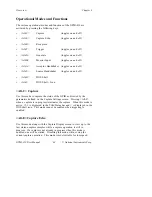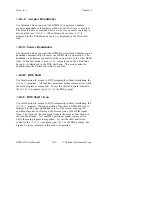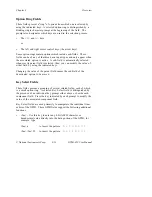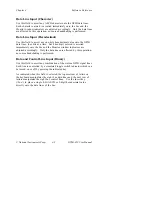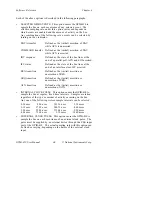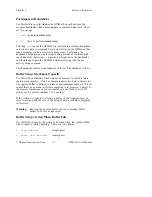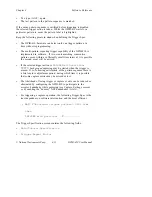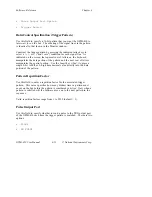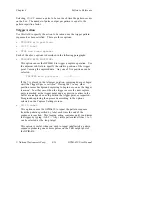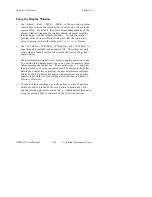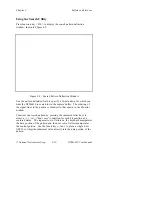
Software Reference
Chapter 4
GPIB-410 User Manual
4-6
© National Instruments Corp.
Each of the above options is described in the following paragraphs.
•
SELECTED GPIB EVENTS. This option causes the GPIB-410 to
sample the bus on each occurrence of any selected event. The
effective sampling rate under this option varies and depends on
which events are enabled and the amount of activity on the bus.
Any combination of the following seven events can be selected by
turning on the • indicator.
DATA transfer
Defined as the (initial) assertion of DAV
while ATN is unasserted.
COMMAND transfer
Defined as the (initial) assertion of DAV
while ATN is asserted.
IDY response
Defined as the state of the bus lines at the
end of a parallel poll–ATN and EOI asserted.
IFC status
Defined as the state of the bus lines at the
end of an interface clear–IFC asserted.
REN transition
Defined as the (initial) assertion or
unassertion of REN.
SRQ transition
Defined as the (initial) assertion or
unassertion of SRQ.
ATN transition
Defined as the (initial) assertion or
unassertion of ATN.
•
INTERNAL CLOCK PULSE. This option causes the GPIB-410 to
sample the bus at regular, fixed time intervals. Samples are taken
regardless of the type or amount of activity occurring on the bus.
Any one of the following sixteen sample intervals can be selected.
0.56 usec
8.96 usec
143.36 usec
2.30 msec
1.12 usec
17.92 usec
286.72 usec
4.60 msec
2.24 usec
35.84 usec
573.44 usec
9.20 msec
4.48 usec
71.68 usec
1.15 msec
18.40 msec
•
EXTERNAL CLOCK PULSE. This option causes the GPIB-410 to
sample the bus on each occurrence of an external clock pulse. The
pulse must be supplied by an external device through the CLK input
port of the GPIB-410. The actual sampling rate with this option can
be fixed or varying, depending on the nature of the external clock
input.



